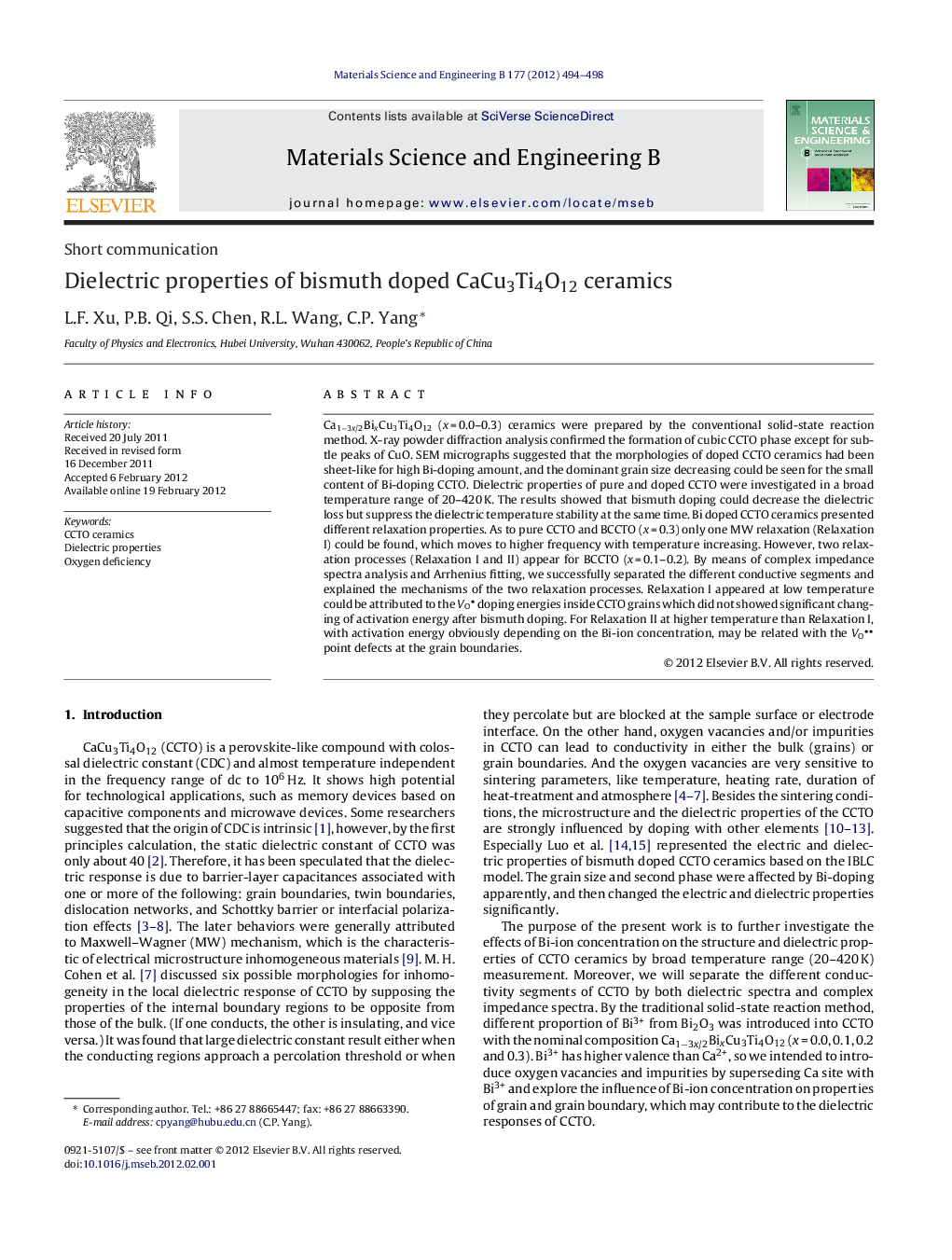| Article ID | Journal | Published Year | Pages | File Type |
|---|---|---|---|---|
| 1529392 | Materials Science and Engineering: B | 2012 | 5 Pages |
Ca1−3x/2BixCu3Ti4O12 (x = 0.0–0.3) ceramics were prepared by the conventional solid-state reaction method. X-ray powder diffraction analysis confirmed the formation of cubic CCTO phase except for subtle peaks of CuO. SEM micrographs suggested that the morphologies of doped CCTO ceramics had been sheet-like for high Bi-doping amount, and the dominant grain size decreasing could be seen for the small content of Bi-doping CCTO. Dielectric properties of pure and doped CCTO were investigated in a broad temperature range of 20–420 K. The results showed that bismuth doping could decrease the dielectric loss but suppress the dielectric temperature stability at the same time. Bi doped CCTO ceramics presented different relaxation properties. As to pure CCTO and BCCTO (x = 0.3) only one MW relaxation (Relaxation I) could be found, which moves to higher frequency with temperature increasing. However, two relaxation processes (Relaxation I and II) appear for BCCTO (x = 0.1–0.2). By means of complex impedance spectra analysis and Arrhenius fitting, we successfully separated the different conductive segments and explained the mechanisms of the two relaxation processes. Relaxation I appeared at low temperature could be attributed to the VO doping energies inside CCTO grains which did not showed significant changing of activation energy after bismuth doping. For Relaxation II at higher temperature than Relaxation I, with activation energy obviously depending on the Bi-ion concentration, may be related with the VO point defects at the grain boundaries.
► Ca1−3x/2BixCu3Ti4O12 (x = 0.0–0.3) ceramics were prepared by conventional solid-state reaction method. ► Bi-doping affected the micro-structure and the dielectric properties of CCTO apparently. ► Multi-relaxation mechanisms related with oxygen deficiency were observed for bismuth doped CCTO ceramics.
